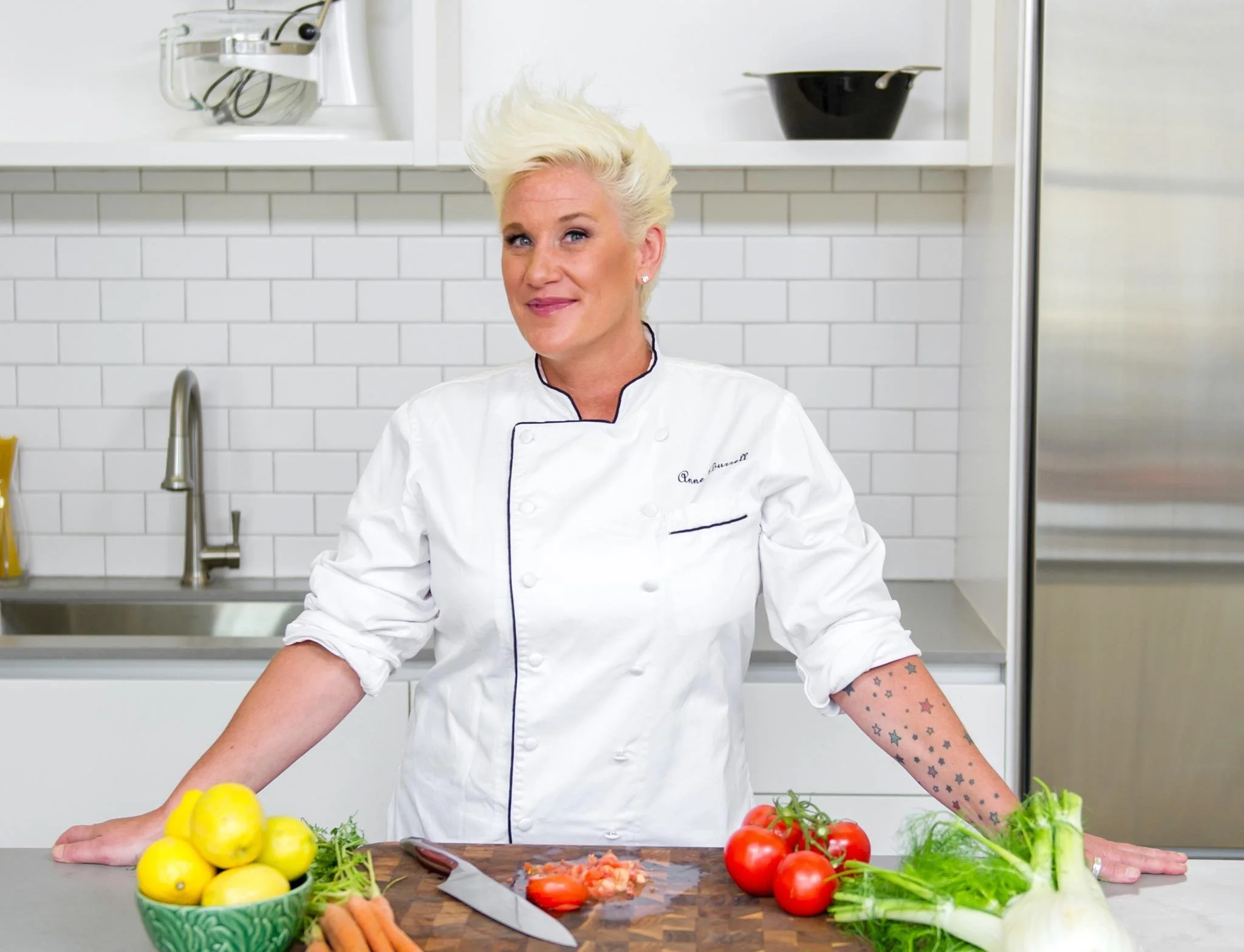What Food Network Chef Anne Burrell Can Teach Us About Content Creation
Food Network chef Anne Burrell could be a top 1% content creator.
You can tell by the way she cooks.
In my past life as a magazine editor, I had the opportunity to interview Burrell. Every bit as charming and witty as her TV persona, her insights gave me an ‘aha!’ moment.
“Only when you have your Mise En Place done can you start cooking,” she told me. “When you feel more comfortable cooking then you can do things faster and work on recipes that are more advanced.”
Mise En Place is a French culinary term that means “everything in its place.”
In other words, have ingredients measured and tools at arm's length before cooking. Replace “cooking” with “creating” and Burrell’s advice is one of the best tips for turning good-ish post ideas into genius content.
Let’s talk creative content creation workflows.
1. Collect Ideas
‘Find content ideas’ doesn’t deserve a special slot on your calendar.
You don’t need to carve out extra time when you’re observant.
What people get wrong about ‘everything is content’ is that it’s not about turning your life into content. It’s using your life to inspire your content.
Start collecting content ideas by noticing what’s got your attention.
What’s inspiring you?
What weird thing did your kid say?
What stopped the scroll for you this week?
What are you reading/watching/listening to?
What’s the conversation in the comment section?
What are you talking to your friends or your SO about?
Jot down any interesting thoughts, observations, or snippets of conversation.
Don't worry about quality at this stage. Just collect the raw ingredients.
2. Connect the Dots
The fact that you cooked carbonara this weekend isn’t content.
The fact that you didn’t spend all your money on takeout this weekend because you planned your grocery shopping ahead of time is.
This sets you up to tell a story about preparation.
What is your audience unprepared for? How can you help them?
Going a layer deeper is usually enough to find a greater truth behind a common experience. That insight is the foundation for purposeful content.
The best time to do this is in the shower — or doing dishes or folding laundry.
Those "aha!" moments while shampooing aren't a coincidence.
Creativity is born out of boredom. Repetitive tasks free up mental load, allowing our minds to make connections between seemingly unrelated ideas.
The result is an original angle; a perspective that gets attention.
3. Make A Point
If getting your message across matters to you, get to the point.
Once you have an idea and an angle, sharpen the focus on the solution. This way you know what to write before you’re back at your desk.
These two answers will save you hours.
Ask yourself:
What problem does this address?
What is my central argument or point of view?
Example:
It’s frustrating to stare at a blank screen waiting for inspiration to strike.
If you don’t have inspiration, don’t start at your desk. Make the creative process enjoyable through observation, insights, and sharp points.
4. Outline
I usually do steps 1-3 in my head, or on notebook paper, in a Google doc, or the notes app on my phone before adding them to Trello so I can find them.
Whatever works. But I’ll never write from note chaos.
Prep the page with an outline so you can put your ideas and insights in order.
It saves a lot of time and hair pulling.
There are hundreds of tried-and-true frameworks for outlining. A simple storytelling outline that always works is:
Surface level problem or relatable moment
Making carbonara instead of getting takeout.
Aha moment that leads to deeper insight into a solution
We waste time and money because we don’t think ahead.
Practical application or examples of how to apply the insight
Collect ideas and develop insights before you write.
Lesson and/or call to action
If you don’t have inspiration, don’t start at your desk. Make the creative process more enjoyable through observation, insights, and sharp points.
Now you have your creative Mise en Place.
You can use this system as your summer content batching schedule.
Assuming you get the habit of observing what gets your attention, you could:
Dedicated 20 minutes on Monday for insight development
Carve out 20 minutes on Tuesday for developing your main point
Carve out 35-45 minutes on Wednesday to outline your posts
Write to fill in the outlines on Thursday
Plug written posts into Canva templates and schedule on Friday
Now that we’re headed into summer, I hope that this practice helps you spend less time at your desk and more time soaking up the sunshine.
Happy Storytelling!
Cyndi
These storytelling prompts were originally published in the StoryCraft Newsletter, where I share two-minutes stories of doing life and business better with actionable tips to tell your stories every week-ish. Sign up for the StoryCraft Newsletter

